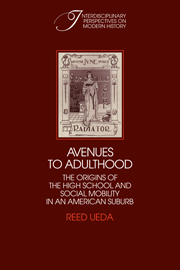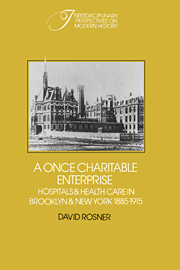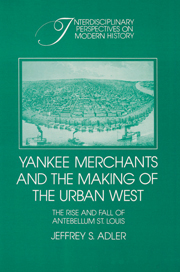9 results in Interdisciplinary Perspectives on Modern History

Servants in Husbandry in Early Modern England
-
- Published online:
- 07 October 2011
- Print publication:
- 12 November 1981

Ethnic Differences
- Schooling and Social Structure among the Irish, Italians, Jews, and Blacks in an American City, 1880–1935
-
- Published online:
- 05 October 2010
- Print publication:
- 28 December 1988

The Congressman's Civil War
-
- Published online:
- 07 September 2010
- Print publication:
- 28 July 1989

Avenues to Adulthood
- The Origins of the High School and Social Mobility in an American Suburb
-
- Published online:
- 04 August 2010
- Print publication:
- 28 August 1987

The National Integration of Italian Return Migration, 1870–1929
-
- Published online:
- 03 December 2009
- Print publication:
- 29 November 1991

Police in Urban America, 1860–1920
-
- Published online:
- 23 October 2009
- Print publication:
- 27 February 1981

A Once Charitable Enterprise
- Hospitals and Health Care in Brooklyn and New York 1885–1915
-
- Published online:
- 07 October 2009
- Print publication:
- 30 September 1982

The Politics of Community
- Migration and Politics in Antebellum Ohio
-
- Published online:
- 06 October 2009
- Print publication:
- 24 June 1988

Yankee Merchants and the Making of the Urban West
- The Rise and Fall of Antebellum St Louis
-
- Published online:
- 14 September 2009
- Print publication:
- 27 September 1991

